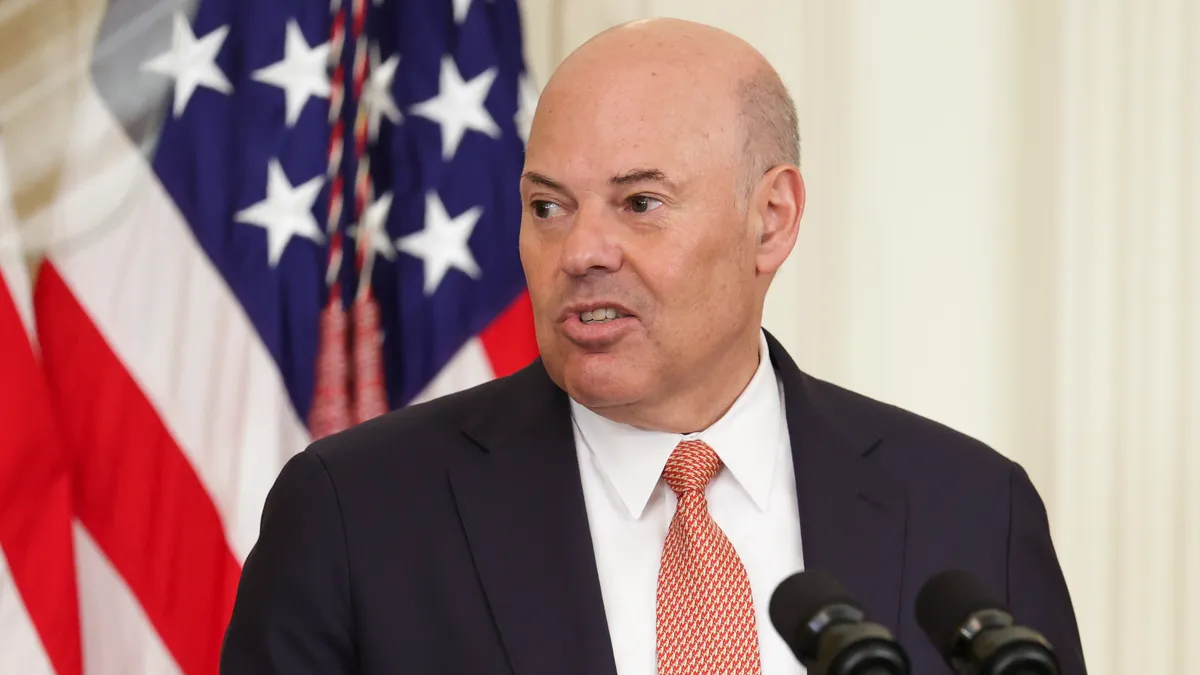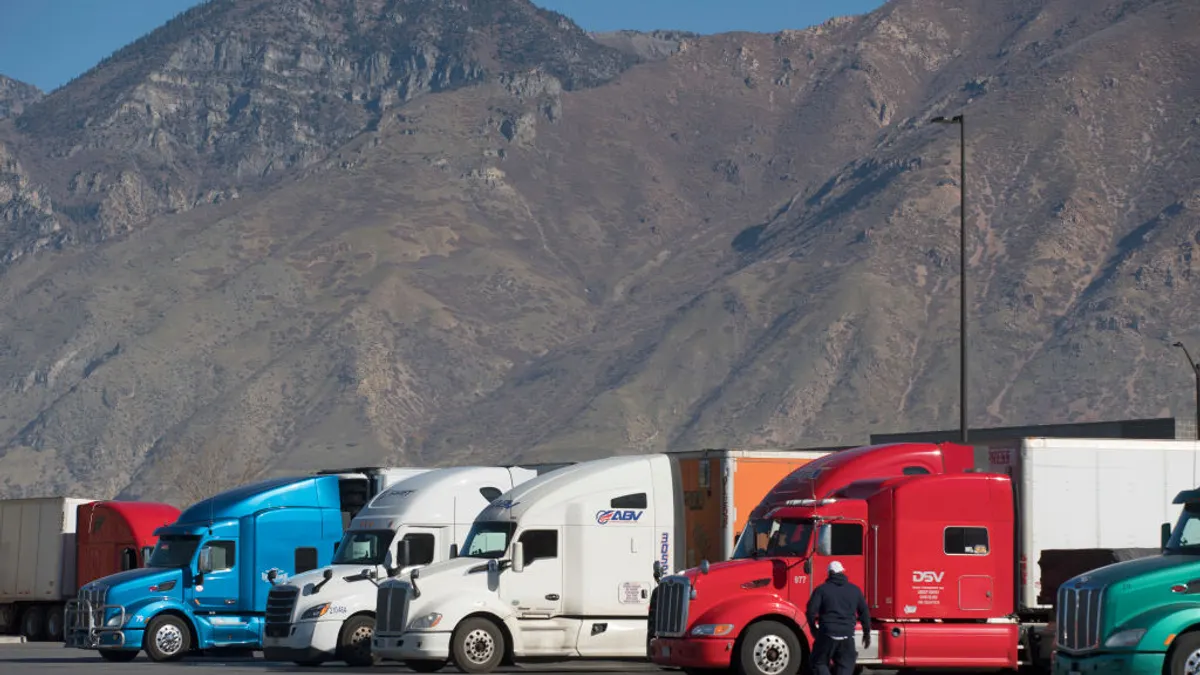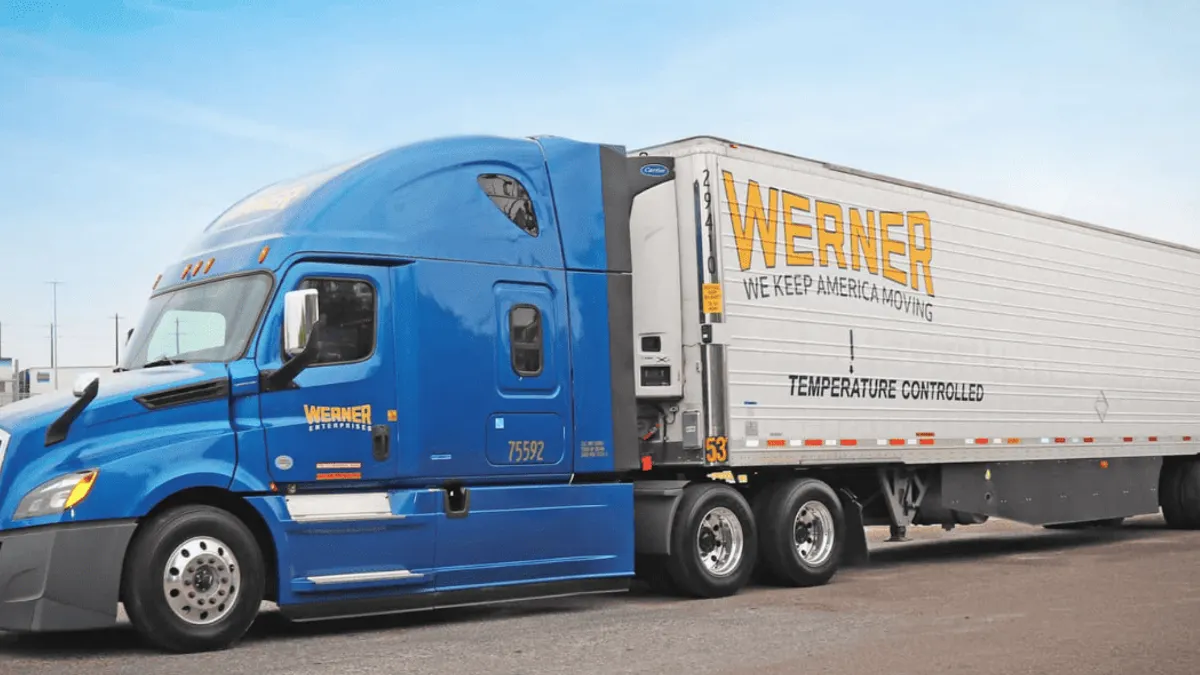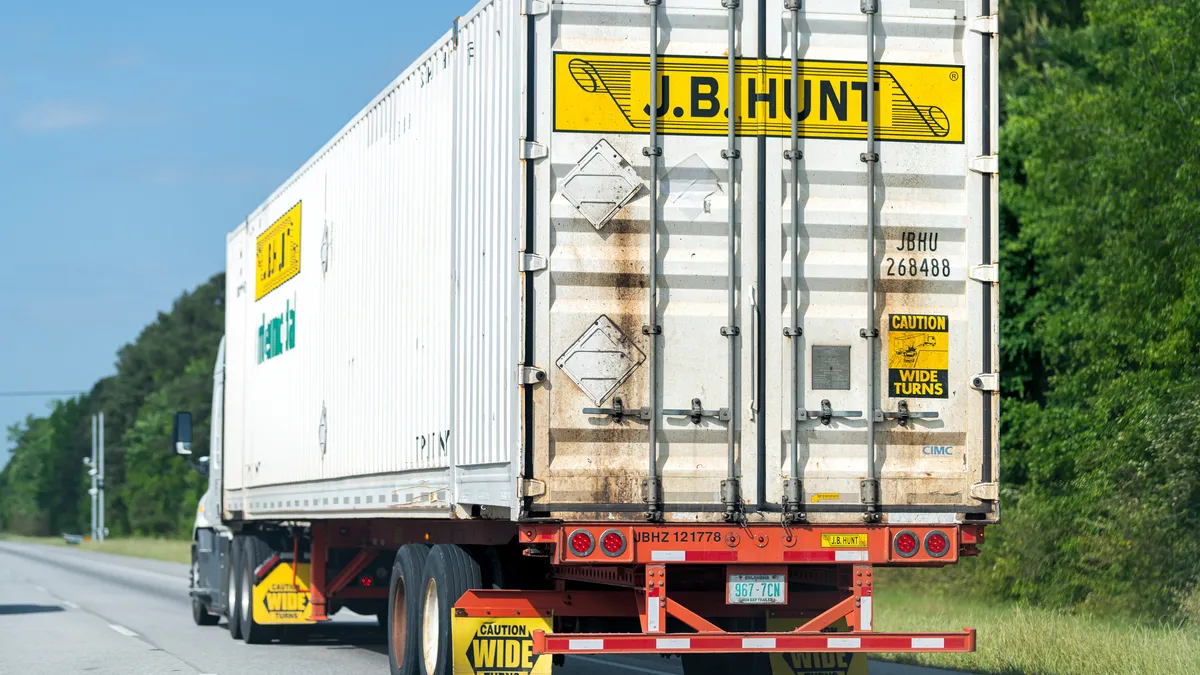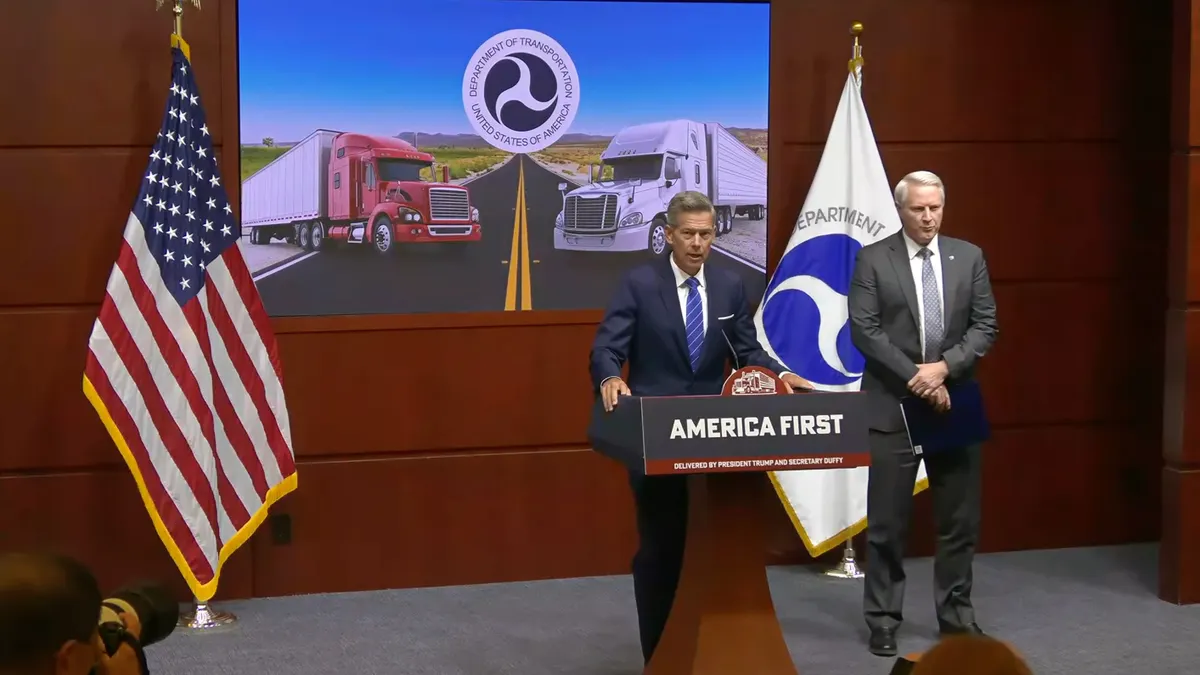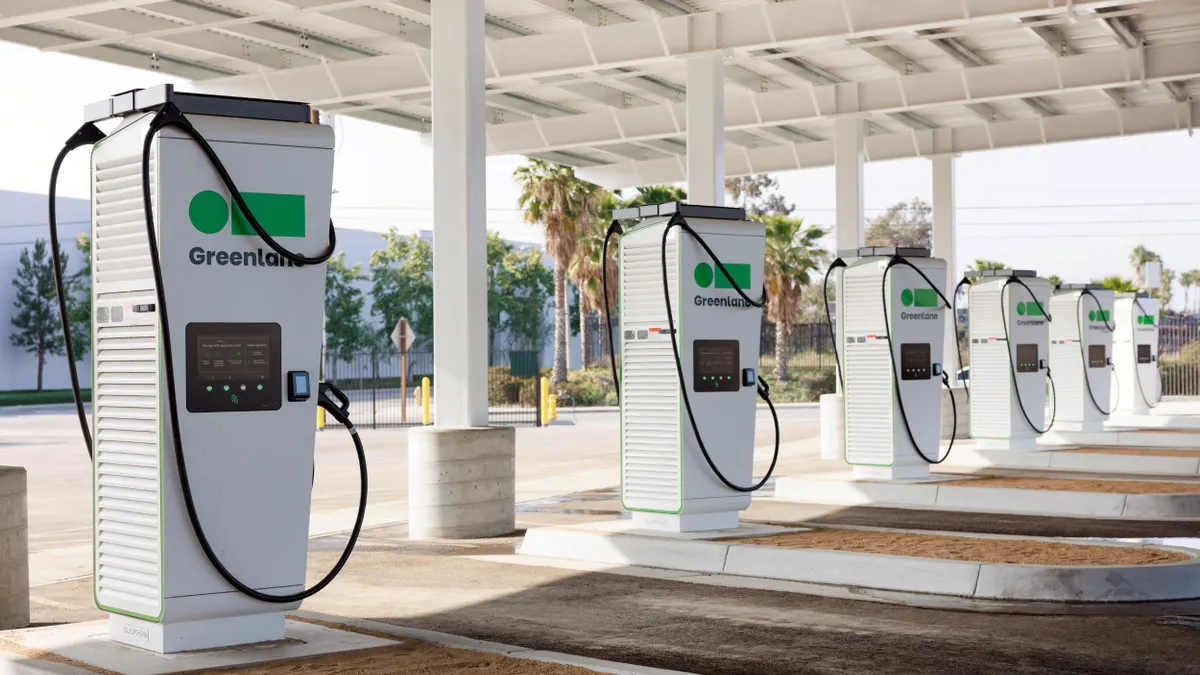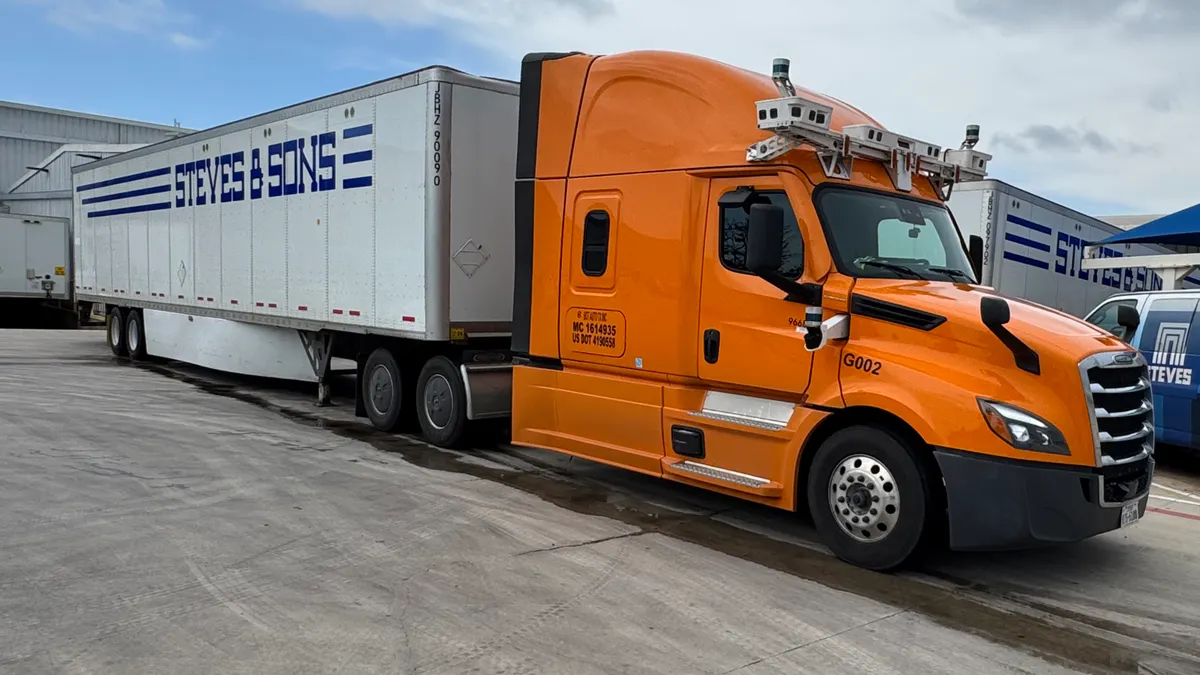The U.S. Postal Service plans to consolidate around 21% of its delivery units into large-scale sorting and delivery centers across the country, as the agency pursues reduced transportation costs and streamlined operations.
Delivery units are the final stop for mail and packages in the agency's network before being picked up by a mail carrier for home and business delivery. Consolidating units is part of the Postal Service’s 10-year plan to reach financial sustainability.
"We have 19,000 [units]. I think when we get done with this, we'll have 15,000 delivery units," Postmaster General Louis DeJoy said in an interview with Supply Chain Dive.
The new sorting and delivery centers will leverage "currently underutilized and vacant postal facilities around the nation," the USPS said in an emailed statement. They will have the needed space and processing capabilities to enable more efficient operations, in addition to infrastructure that can support an electric vehicle fleet.
"They happen to be in population centers big enough to at one point have a mail plant, but as mail volume got less, we stopped processing mail there," DeJoy said. "Well, those [plants] are perfect opportunities for delivery centers."
Currently, densely populated areas may have up to 50 delivery units in a 25-mile radius, which DeJoy said adds unnecessary time and cost to the process. Cost-cutting has become a major focus for the agency, which has posted $87 billion in losses from fiscal years 2007 through 2020. Congress recently approved $50 billion in financial relief for the Postal Service over the next 10 years, and the bill requires changes to the agency’s health insurance plans to cut down on costs.
The USPS' first sorting and delivery center, in Athens, Georgia, will be operational this fall and the agency said it is "evaluating more than 100 new locations" for these centers. An Aug. 12 letter from a USPS official to American Postal Workers Union President Mark Dimondstein listed 21 sites to be converted to sorting and delivery centers by February 2023.
The USPS is also rolling out 65 regional distribution centers as part of its plan in cities such as Atlanta, Charlotte and Indianapolis, DeJoy said.
The streamlined facility footprint will particularly help the Postal Service tamp down transportation costs, according to DeJoy. The agency runs 55,000 trucks daily that are on average 35% to 40% full. He expects at least a 20% reduction in truckload traffic thanks to the initiative, with some progress already being made in that department.
"All in all, this is a five-year transformation, region by region, and along the way, we will emulate as much of it as we can, because there are opportunities for deploying this strategy in a voluminous [manner] with the expansive network that we have," DeJoy said.
The planned consolidation of thousands of delivery units is yet another example of DeJoy shaking up the financially struggling agency. The Postal Service pursued reducing late and extra truck trips in 2020 and has since pushed to rely more on surface transport than on air cargo shipping.
Affected mail carriers will need to pick up mail and start their routes from these new sorting and delivery centers, but DeJoy said carrier operations will only shift in areas that make sense to consolidate. He added that the USPS is structuring the initiative so no mail carrier will encounter more than 30 minutes of additional travel time, one way, on their routes.
Employee groups have raised concerns about the agency’s facility consolidation plan. The United Postmasters and Managers of America said in a notice in August that it has received "few answers" from the Postal Service on questions it has on the initiative's impact on service and Postmasters, who run post offices. The group added that it "is very concerned about the implementation going forward."
Charlie Cash, the American Postal Workers Union's industrial relations director, echoed those concerns in an August email to members, saying the union doesn't have enough information to determine how the use of sorting and delivery centers will impact USPS service.
The USPS said in its statement that the changes will enable it “to maintain reliable and efficient delivery services for all customers,” adding that the new sortation and delivery centers will not change its retail unit locations.
Other parcel carriers are making their own network readjustments to save costs and improve service reliability. FedEx is seeking greater collaboration between its separate Express, Ground and Freight segments — and $2 billion in annual savings — through its "Network 2.0" plan. UPS has launched an initiative centered around its feeder trucks to reduce late departures and deliveries.



